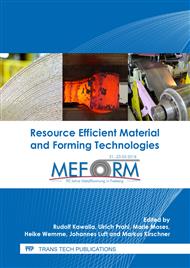p.65
p.71
p.77
p.85
p.95
p.103
p.110
p.117
p.125
Robustness - Practice Report: Make Forming Processes more Stable
Abstract:
In the last years, the development of sheet metal forming technologies shows many different tendencies such as materials or geometries. In the same duration the process planning for stamping processes keep still in the same way, although numerical algorithm and hardware improved continuously. That means, as components, processes and materials got more complex, the planning process still stays in the same technical evolution stage as years before. At present it is mostly a deterministic kind of planning. And in this way, potentials and possibilities still lie down. In the actual discussion around industry 4.0 new potentials around this topic seems to show new ways, but a lot of data and technologies are already available to improve production and forming processes. The task is to use this data. The key to improve the processes based on this data is the stochastic simulation, especially in the sheet metal forming industry [1,2]. The eberspaecher company as customer for sheet metal parts has an immense interest in high quality parts. High quality parts are an important step to reduce cost in the own following manufacturing. This paper deals with actions to integrate stochastic considerations into the planning process at eberspaecher. And its content should excite the discussion around robustness processes, stochastic simulation and in this way industry 4.0 as one base for future manufacturing.
Info:
Periodical:
Pages:
95-102
Citation:
Online since:
March 2018
Authors:
Permissions:
Share:
Citation:


